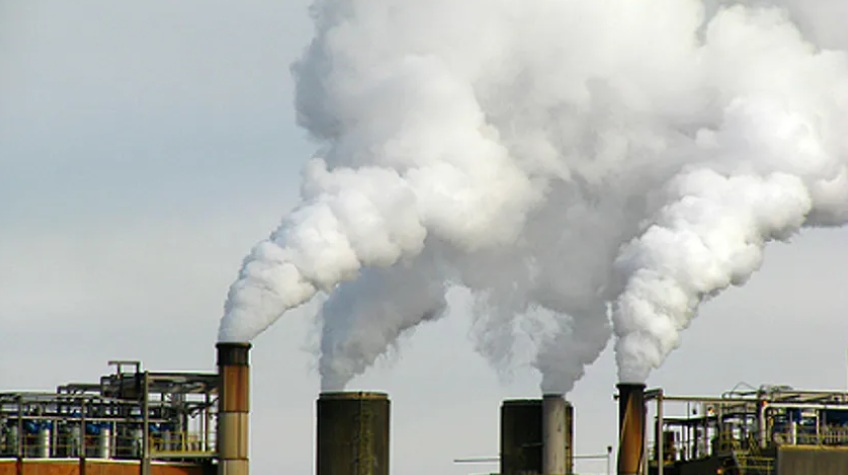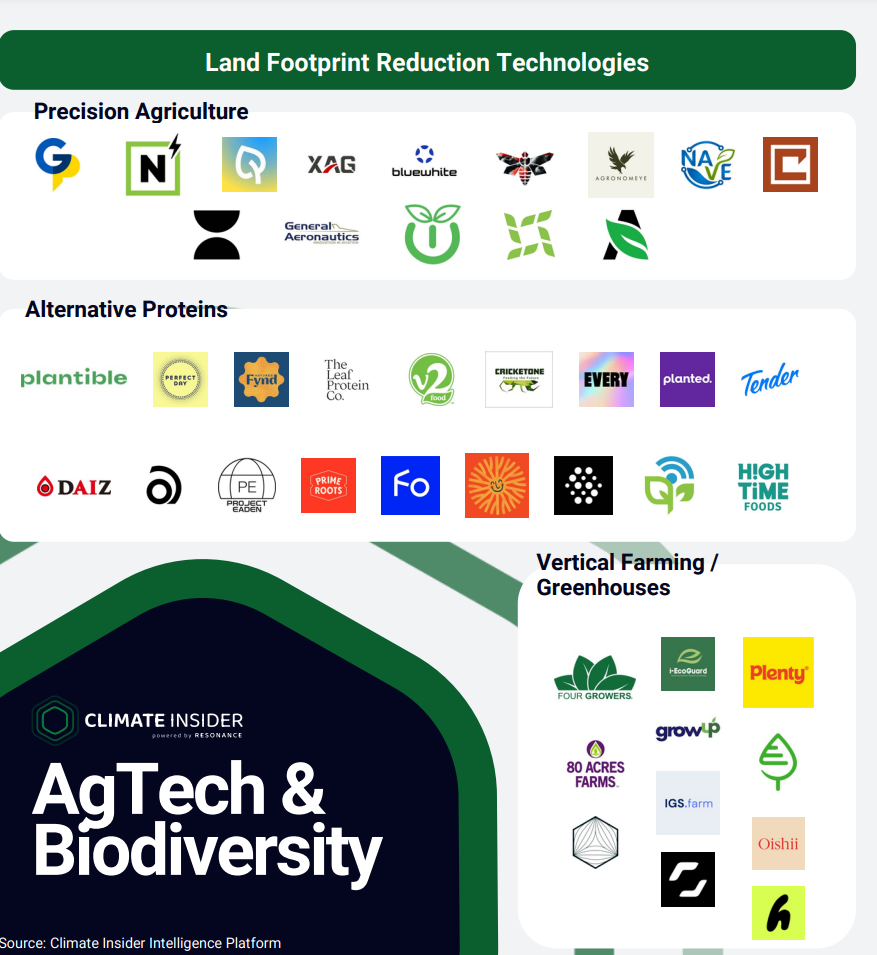Welcome to Climate Tech Pulse, your daily dose of market intelligence helping fuel the fight against climate change. From groundbreaking investments to cutting-edge research, we’re bringing you the latest in climate tech that’s shaping our future.
Don’t miss out on tomorrow’s climate solutions – subscribe now to stay ahead of the curve! https://lnkd.in/dwr7B9XJ
Today’s newsletter:




DOE Invests $127 Million to Advance Carbon Capture, Removal, and Conversion Test Centers
Major Federal Investment in Carbon Capture Tech
The U.S. Department of Energy is channeling over $127 million to develop cutting-edge carbon capture, removal, and conversion test centers. This initiative targets cement manufacturing and power plants, crucial for achieving net-zero emissions by 2050.
The goal? Make these technologies more affordable and scalable.
Advancing Carbon Capture & Conversion
Three focus areas will be funded: establishing a test center at an electric generating unit, upgrading existing carbon capture facilities, and creating a test center at a cement manufacturing facility. These projects will refine technologies to convert CO2 into valuable products and minimize carbon pollution.
A Pathway to a Cleaner Future
The initiative supports the Biden-Harris Administration’s climate goals, reducing CO2 emissions from industrial operations and power generation. By enabling economic and environmentally sustainable carbon management, these efforts are critical to tackling climate change. Read More
Quote of the Day
“Carbon capture and storage is one of our critical pathways for significantly reducing domestic and global carbon dioxide emissions. Investments in test centers will help reduce costs, minimize environmental risks, scale up carbon capture, removal, and conversion processes to commercial scale, and ultimately help reduce carbon pollution.”
–Brad Crabtree, Assistant Secretary of Fossil Energy and Carbon Management.
Significance: Brad Crabtree’s quote highlights the pivotal role of carbon capture and storage in achieving substantial reductions in carbon emissions, signifying that investments in test centers are essential for scaling up these technologies and addressing climate change effectively.
Market Movers
Image Credit: Kevn M Klerks
- Canada is investing $9.14 million in six innovative clean hydrogen projects to drive down energy costs and solidify its position as a global leader in clean energy by advancing low-cost hydrogen production, renewable hydrogen integration, and efficient storage and transport solutions. Read More
- Power to Hydrogen Inc., a Columbus, OH-based firm specializing in advanced electrolysis technologies, secured over $18M in Series A funding led by Rev1 Ventures and Worthington Enterprises, with global investor support, to expand its U.S. team, enhance manufacturing and supply chains, and open new offices in Belgium. Read More
- Canadian nuclear projects, including Bruce Power’s Unit 3 and Ontario Power Generation’s Darlington refurbishments, are exemplary for being on time and on budget, highlighting Canada’s success in managing major infrastructure projects amidst widespread delays in other sectors. Read More
- UK operator National Gas Transmission shared three-year study on blending and transporting hydrogen through the gas transmission system. The study found no major obstacles, concluding that repurposing the network for hydrogen is feasible. Read More
Tech Spotlight
Innovative Metamaterial Reactors for Efficient Thermochemical Processes
Image credit: ScienceDirect
Researchers have developed metamaterial reactors, a new class of electrified thermochemical reactors. These reactors use high-frequency magnetic induction to achieve efficient, uniform volumetric heating. They feature an open-lattice metamaterial baffle as a susceptor, enabling near-unity heating efficiencies and stable operation at high temperatures. This innovation is crucial for processes like the reverse water-gas shift (RWGS) reaction, which converts CO2 into valuable syngas.
Commercial Viability
- Efficiency: The reactors demonstrate near-unity heating efficiency and uniform temperature profiles, improving the performance of industrial-scale chemical processes like RWGS.
- Market Potential: This technology could significantly advance industrial decarbonization, offering a scalable solution for CO2 utilization and renewable fuel production.
Technical Viability
- Design: The metamaterial’s open-cell ceramic structure is optimized for volumetric heating and high thermal conductivity, enhancing reactor efficiency.
- Scalability: The reactor design is suited for scaling, with potential applications in various high-temperature chemical processes, supported by mature power electronics and catalyst technologies.
Environmental Viability
- Sustainability: By efficiently using green electricity for high-temperature reactions, these reactors reduce the carbon footprint of chemical production.
- CO2 Utilization: The RWGS process directly contributes to CO2 reduction, converting it into useful chemicals and fuels, aligning with global decarbonization goals.
This metamaterial reactor technology represents a significant advancement in sustainable chemical engineering, offering a practical pathway for decarbonizing the chemicals industry. Read More
Policy Pulse
This section includes global updates on climate change policy, governance and regulation.
South Africa has passed its Climate Change Act, aligning with about 60 other countries.
The Act outlines national climate policy and governance, emphasizing coordinated and cooperative responses. It includes principles like just transition, considering vulnerable groups, and the polluter pays principle.
Why it Matters: This policy development matters because it establishes a comprehensive framework for South Africa’s climate action, integrating governance, adaptation, and mitigation strategies to address climate change effectively. Read More
New independent study highlights Cooperative Research Centres (CRC) Program’s crucial role in advancing Australia’s Net Zero goals.
The CRC Program is expected to generate $4.8 billion in additional economic output, $3.3 billion in cumulative CO2 abatement, and create 3,705 job years (approximately 265 full-time jobs per year) by 2032.
Why it Matters: This development is crucial because it demonstrates the CRC Program’s substantial impact on advancing Australia’s Net Zero goals through significant economic benefits, CO2 abatement, and job creation, while highlighting the need for continued investment and collaboration. Read More
Today’s Climate Data Point
Recent analysis from Bloomberg New Energy Finance (BNEF) underscores the urgency for Australia to accelerate its decarbonisation efforts to meet its 2050 net-zero commitment. The report highlights that Australia will need to make a substantial investment and significantly expand its renewable energy infrastructure to stay on track.
Here’s a detailed breakdown of the key data points from BNEF’s latest findings:
Image Credit: BloombergNEF
Investment and Capacity Requirements:
- Total Investment Needed by 2030: $3.56 trillion USD (approximately AUD 2.4 trillion)
- Required Growth in Renewable Energy Capacity: 135%, reaching more than 126 GW
Energy Transition Scenarios:
- Net Zero Scenario (NZS):
- Electricity Demand Increase: 2.5 times by 2050
- Renewable Capacity Targets: Solar and wind installations reaching a combined 290 GW
- Storage Expansion: From 3 GW today to over 59 GW, including batteries and pumped hydro
- Investment Requirement: $3.56 trillion, which is 12% more than the baseline scenario but offers significantly better net-zero outcomes
- Base-Case Economy Transition Scenario (ETS):
- Global Warming Outcome: Consistent with a 2.6°C increase by 2050
Energy Sector Transformation:
- Phase-Out Timeline: All unabated coal and nearly all unabated gas generation must exit by 2035
- Future Energy Mix: Dominance of renewable energy sources paired with flexible technologies such as batteries and pumped hydro
Critical Insights:
- Urgency for Renewable Rollout: BNEF’s Leonard Quong emphasizes the critical need to accelerate the deployment of renewables within this decade to meet decarbonisation targets.
- Long-Term Sector Support: A low-carbon power sector will provide a foundation for further emissions reductions across other economic sectors in the future.
- Investment Challenges: Continuous investment in the energy sector is necessary, regardless of decarbonisation efforts. Effective capital allocation is crucial to support the right technologies at the right time.
Technological and Strategic Needs:
- Emerging Technologies: Hydrogen, biofuels, and carbon capture systems are essential for achieving net-zero targets. However, their future reliability, acceptability, and scalability remain uncertain.
- Alternative Solutions: Without effective use of these emerging technologies, additional emissions reductions will likely be required from more expensive solutions across the economy.
Significance: Australia’s 2050 net-zero goal hinges on swift, significant investment in renewable energy and storage infrastructure. This crucial shift from fossil fuels to a renewable-based system is vital for both meeting climate targets and creating a sustainable energy future. Read More
Climate Insider Intelligence: Dissecting McKinsey’s Insights on Renewable Energy and Infrastructure Needs
Image Credit: McKinsey
The energy transition—the shift from fossil fuels to renewable sources—is complex, with challenges that go beyond technology alone. McKinsey’s report, The Hard Stuff: Navigating the Physical Realities of the Energy Transition, delves into these intricacies. It highlights the practical hurdles and opportunities that must be tackled.
Key Highlights:
Energy Demand: Global energy demand will rise 50% by 2050; renewables will supply 85% of this growth by 2030, but intermittency challenges persist.
Critical Minerals: Demand for lithium, cobalt, and nickel could increase 400-500% by 2040, risking supply chain disruptions and slowing clean tech adoption.
Investment Gaps: Achieving net-zero emissions by 2050 requires $275 trillion in investments; current levels are far below what’s needed.
Key Technologies: Hydrogen and carbon capture are vital but require significant cost reductions and $6 trillion in infrastructure investment.
Policy Challenges: Only 20% of global emissions are under carbon pricing; this needs to reach 60% by 2030 to meet climate goals.
Economic Impact: The transition could create 25 million new jobs by 2050 but may also result in 10 million job losses in fossil fuel sectors.







